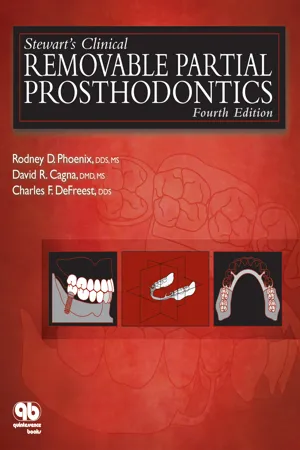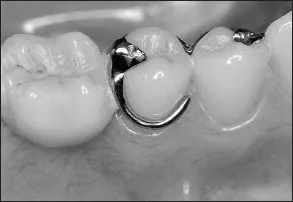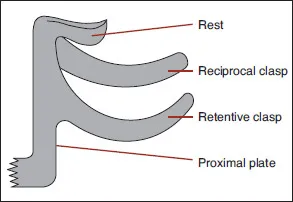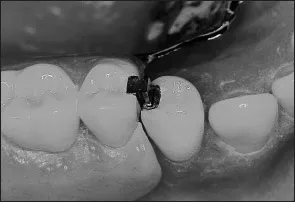![]()
1
INTRODUCTION AND CLASSIFICATION
Terminology
Several efforts have been made to standardize dental terminology, beginning with Dr Louis Ottofy’s compilation of accepted dental terms in 1923.1 This document greatly improved communication within the dental profession. As the dental profession matured, new materials and techniques were introduced. Increasing dental knowledge gave rise to recognized dental specialties, and dental terminology continued to evolve.
The greatest advance in prosthodontic terminology was made in 1956 when the Academy of Denture Prosthetics published the Glossary of Prosthodontic Terms. Since that time, the publication has been updated on a regular basis. Currently, the Glossary is published in the Journal of Prosthetic Dentistry every 2 years.
To ensure that the terminology used throughout this book will be understood by all readers, definitions of some of the most frequently encountered words are provided in this section. In addition, the terms used in this book are limited to those that are recognized as acceptable.
Branches of prosthodontics
The art or science of replacing absent body parts is termed prosthetics, and any artificial part is called a prosthesis. As applied to dentistry, the terms prosthodontics and dental prosthesis are used. Prosthodontics is the branch of dental art and science that deals with the replacement of missing teeth and oral tissues to restore and maintain oral form, function, appearance, and health. There are three major divisions of prosthodontics: fixed prosthodontics, removable prosthodontics, and maxillofacial prosthodontics (Fig 1-1). Despite the importance of dental implants, the authors of this text do not consider implantology a major division of prosthodontics. Instead, implants are considered adjuncts in fixed, removable, and maxillofacial therapy.
Fig 1-1 Branches of prosthodontics.
According to the Glossary of Prosthodontic Terms, fixed prosthodontics is the branch that deals with the replacement and/or restoration of teeth by artificial substitutes that are not readily removed from the mouth.2 This book addresses fixed prosthodontics only as it relates to removable partial dentures. The glossary defines maxillofacial prosthodontics as the branch of prosthodontics concerned with the restoration and/or replacement of stomatognathic and associated facial structures that have been affected by disease, injury, surgery, or congenital defect.2 Removable prosthodontics is devoted to replacement of missing teeth and contiguous tissues with prostheses designed to be removed by the wearer. It includes two disciplines: removable complete and removable partial prosthodontics. This book deals with the latter.
Terms related to dental prostheses
As previously noted, a prosthesis is an artificial replacement for a missing body part. A dental prosthesis is an artificial replacement of one or more teeth and/or associated structures. In clinical applications, dental prostheses may be supported by teeth, residual ridges, dental implants, or a combination thereof. Consequently, practitioners must be familiar with the associated terminology.
The terms abutment and retainer are central to a discussion of dental prostheses. An abutment is any tooth or dental implant that supports a dental prosthesis. In contrast, a retainer is the portion of a fixed or removable partial denture that attaches the prosthesis to an abutment (Fig 1-2). Hence, an abutment is part of the patient’s oral cavity (eg, a tooth or implant), while a retainer is part of the prosthesis.
Fig 1-2 An abutment is any tooth or dental implant that supports a prosthesis. A retainer is the portion of the prosthesis that attaches the prosthesis to an abutment.
Traditionally, fixed partial dentures have been attached to abutments using dental cements, while removable partial dentures have been attached to abutments by other means. In removable partial denture prosthodontics, there are two principle types of retainers. They are termed extracoronal retainers and intracoronal retainers. Extracoronal retainers consist of two fingers of metal (ie, clasps) that lie on the surface of a clinical crown (Fig 1-3). One finger of metal is termed a retentive clasp, while the other is termed a reciprocal clasp. The retentive clasp is located in an undercut area of the clinical crown and resists displacement of the prosthesis away from the underlying hard and soft tissues. The reciprocal clasp is located in a non-undercut area and serves as a bracing or stabilizing element for the prosthesis. The resultant assembly is termed an extracoronal retainer because the retentive and reciprocal components lie on the external surfaces of an abutment.
Unlike extracoronal retainers, intracoronal retainers are contained entirely within the contours of a clinical crown (Fig 1-4). Consequently, the use of intracoronal retainers generally requires the fabrication of two or more specially designed, complete-coverage crowns. In most instances, retention of intracoronal removable partial dentures is dependent upon exact parallelism of the retentive assemblies. Each assembly consists of two parts, commonly termed matrix (“female”) and patrix (“male”). Figure 1-5 illustrates the joining of a patrix and matrix to form a functional retentive unit. When a dislodging force is applied to the removable partial denture, binding occurs between the external walls of the patrix and the internal walls of the matrix. This binding results in retention of the prosthesis.
Fig 1-3 Components of an extracoronal retainer usually include a rest, retentive and reciprocal clasps, and a proximal plate.
Fig 1-4 An intracoronal retainer lies within the contours of the clinical crown. An intracoronal retainer consists of a matrix or “female” component (right) and a patrix or “male” component (left).
Fig 1-5 When joined, matrix and patrix components form a closely fitting retentive assembly.
Another method for categorizing removable partial dentures relates to the manner of their support. A partial denture that receives...





